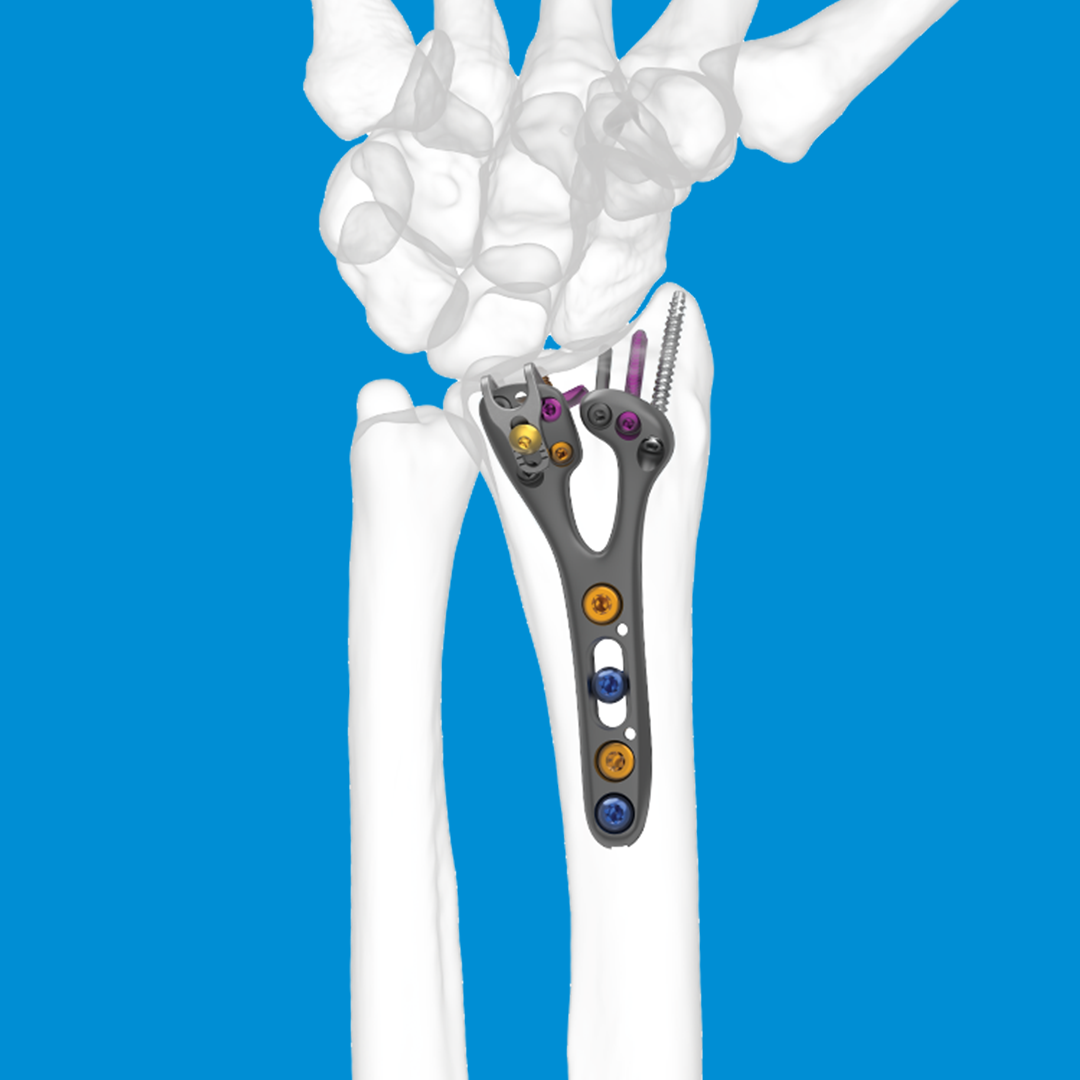
REDUCT® Arthrodesis Screw System
Features
- Seamless fusion site preparation with precision reamers
- Differential pitch effect for compression
- Proximal threads for bone engagement
REDUCT® Arthrodesis Screw System Characteristics
Skeletal Dynamics’ arthrodesis screw system is designed for the fixation of osseous fragments and fractures, osteotomies, and arthrodesis of small joints. The implants are therefore designed to address common clinical issues to aid surgery. For example, system screws feature an unthreaded section to allow compression and indicate placement on fluoroscopy. It also has multiple screw options to fit a range of patient anatomy. As a result, this system has seen great success when supplied by a trusted UK orthopaedic distributor like LEDA.
The REDUCT Arthrodesis Screw System contains the following components:
- 2.5mm cannulated titanium screws: lengths range from 26mm-40mm in 2mm increments.
- 3.5mm cannulated titanium screws: lengths range from 32mm-46mm in 2mm increments.
- 2.0mm non-cannulated titanium screws: lengths range from 20mm-44mm in 2mm increments. Also features a smooth proximal end for guidance.
- Specialised instrumentation: custom reamers (convex for shaping distal bone and concave for shaping proximal bone), double trocar K-wires (1.4mm x 165mm, 0.9mm x 152mm), Drills (1.9mm, 2.7mm and 3.5mm), depth gauges, driver.
Example uses for the REDUCT system include: Scaphoid fractures, lunate fractures, capitate fractures, trapezial fractures, metacarpal and metatarsal fractures, phalangeal fractures, radial head fractures, ulnar styloid fractures, osteo-chondral fractures, small joint fusions, carpal fractures and non-unions, capitellum fractures, distal radius fractures, humeral head fractures, glenoid fractures, intercarpal fusions, interphalangeal fractures, metatarsal osteotomies, tarsal fusions, malleolar fractures, patellar fractures, odontoid fractures, and mandibular fractures.
INTERESTED IN REDUCT® Arthrodesis Screw System?
If you would like more information regarding Skeletal Dynamics REDUCT® Arthrodesis Screw System.
Interested in the REDUCT® Arthrodesis Screw System ?

Implants designed to address common clinical issues

Convex reamers for shaping distal bone

Concave reamers for shaping proximal bone

Founded in 2007 by Dr Jorge Orbay, MD, Skeletal Dynamics set out to provide innovative, science-based solutions to solve and understand the clinical challenges of upper extremity surgery and unmet clinical needs. Skeletal Dynamics is the only medical device company that is 100% solely focused on the upper extremities. Distributors of Skeletal Dynamics are selected based on individual integrity, industry experience and clinical knowledge and LEDA is proud to be the leading UK orthopaedic distributor for Skeletal Dynamic products including:
Frequently Asked Questions
Small joint fusion is a surgical procedure that uses internal fixation and open reduction to relieve arthritis symptoms. It removes damaged pieces of bone and then compresses the ends together, allowing bones to reknit over time. Fixation is achieved through metal screws and plates, leading to the joint becoming stiff.
In cases of finger fracture, small joint fusion involves fixation of the distal interphalangeal joint (DIP).
Osseous fractures and broken bones can be identified by various symptoms depending on severity. Minor fractures will commonly induce bruising and swelling around the affected area. The individual may also experience pain following the application of pressure. Severe fractures that result in bone dislocation can cause visible deformity, along with the aforementioned symptoms. In extreme cases of trauma, osseous fractures will cause bones to breach the skin. Common causes of osseous fractures include vehicle collisions, falls, arthritis and more.
Research supports fractures in older patients, known as a ‘geriatric fracture, are more common than younger patients. This is largely because patients are more likely to develop osteoporosis, leading to decreased bone density. Fracture risk increases for women, as they generally have lighter and thinner bones than men. Geriatric fractures usually occur in the hip, wrist, and elbow. Children between the ages of 1-6 have also been shown to experience fractures at a higher rate than most other age groups, as their bones are still developing.

